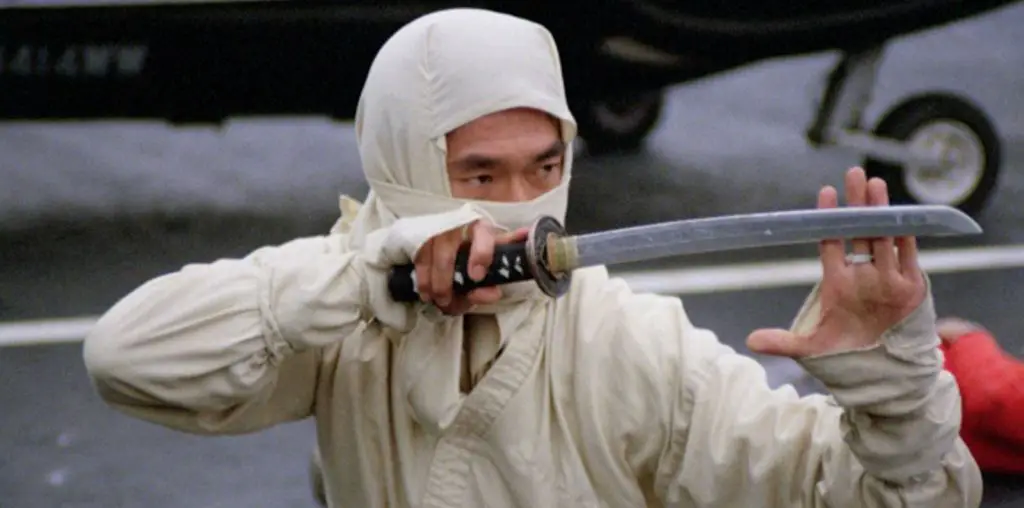
It was July 20, 1984, when I piloted my fierce navy blue Camaro to my local movie theater in Overland Park, Kansas to Eddie Murphy’s newest comic masterpiece. I was 16, recently licensed, and if I got to the theater quick enough – my buddy who worked there was going to sell me the much-coveted “R” rated ticket. As I broke red light after red light to get there on time, I remember thinking how blessed I was that I actually landed a “golden ticket” to what would surely be a memorable film. My cinematic experience that evening was beyond memorable, as watching “Best Defense” forever tattooed a painful memory into the depths of my mind. I was crushed. “Best Defense” sucked and Eddie Murphy was barely in the film. As the end credits rolled away, my disappointment swelled as I wondered how I got duped out of my $3.75 – (slightly more than my hourly wage at Showbizz Pizza) – for a stupid movie with barely any minutes with the star I paid to see. Simply put, I had no defense against Paramount Studios packaging their hottest star (Eddie Murphy) into a dog of a film – in order to get me to pay to see it.
This, of course, bring us to today’s topic:
Packaging Your Film (with stars and sellable names).
Before we get into to strategies on how to package your film and how to know whom to package, I must admit that in all fairness, Paramount Studios didn’t dupe me at all – they actually warned me. In fact, the “Best Defense” movie poster clearly warned all of us as it stated, “With strategic guest star Eddie Murphy.” Little did I know that Paramount’s “strategic guest star” was talking about their release strategy for the film, not the strategy within the film’s storyline.
Apparently, Eddie Murphy wasn’t originally in “Best Defense” and Paramount only created a role for him after the film failed miserably in test screenings. That’s why Eddie Murphy doesn’t interact with the other lead in the film (Dudley Moore). Eddie Murphy was an after-the-fact “star power” addition, trying to save an otherwise less than magical film. The move was a classic case of bad packaging.
 Just so you don’t think that packaging your film with names is a bad thing to do, consider “Rain Man” (1988). This film’s genre doesn’t fall within the easiest ones to sell, until former CAA agent Michael Ovitz packaged his own clients Tom Cruise and Dustin Hoffman into the film. Suddenly, a script that was headed to become a TV movie suddenly morphed into a star-studded extravaganza that won four Academy Awards and became one of the most iconic films of its decade.
Just so you don’t think that packaging your film with names is a bad thing to do, consider “Rain Man” (1988). This film’s genre doesn’t fall within the easiest ones to sell, until former CAA agent Michael Ovitz packaged his own clients Tom Cruise and Dustin Hoffman into the film. Suddenly, a script that was headed to become a TV movie suddenly morphed into a star-studded extravaganza that won four Academy Awards and became one of the most iconic films of its decade.
Before you start arguing that all I’ve mentioned are huge-budgeted studio releases, remember that indie films like “Pulp Fiction” (1994) got John Travolta and “Snatch” (2000) landed Brad Pitt and “Monster” (2003) landed Charlize Theron based on the strength of the script alone. Thus, while “stars” may seem out of reach, you can help the Universe align them toward your project, given the right tools.
So, let’s give you some “bionic” tools.
1) The “talent” in your film is crucial to its success, because “who is in the film” is the very first question that any international film buyer asks us when we’re trying to sell at a film market. That question precedes the second question, “what genre is it.” Thus, consider the elements of your film’s “talent” and “genre” as the yin and yang of your project. You may do okay with one, but having both will help you succeed harmoniously.
But, before you rush out and attach a name whom you think will be big enough to get you financed and distributed, you should meet with an international distributor-sales agent to learn what your proposed actor’s value is overseas. The reason is that an actor who is “sellable” overseas may have little to do with who is “sellable” in the USA (I use the term “actor(s)” for both male and female actors, since my wife is a doctor and nobody calls her a “doctress”….)
In explanation, you could be considering several actors for one role – all of which may cost the same money. But, they could all bring you vastly different international values. Whereas, one actor could possibly guarantee you most of your budget back internationally, another could bring you virtually nothing in sales. This phenomenon certainly isn’t the actors’ fault; it just reflects how tastes around the world differ. Sadly enough, it also reflects a few “ugly truths” about the international viability of actors. As you absorb these following two Neanderthal-minded “ugly truths” that I personally find appalling, just know these are truths that most international distributors and film buyers will never share outside of their own circles – much less ever to filmmakers. But, since reading this article puts you into “my circle”, I’m (un) happy to share the following:
a) Films with minority-based leads have little value.
(Outside of a few international superstars like Will Smith, Jackie Chan and Denzel Washington).
b) Films with female leads have even less value than films with minority-based male leads.
(Outside of international superstar Angelina Jolie).
Of course, as a minority myself, I’m working diligently to change these senseless trends by showcasing good work starring minorities and women, but I just wanted to share the information with you to keep you informed.
2) Four Elements That Capture an Actor’s Attention.
When you’re trying to get to an actor, these four elements that may be able to help you get your star:
a) Money.
b) Material.
c) Opportunity.
d) Purpose.
Money is the easiest route to getting someone solid attached. But, if you don’t have deep pockets, or if you can’t get your hands into someone else’s deep pockets, then your material (a strong script with challenging roles) may also land you a name.
 Of course in the event that you don’t have money or a great script, you can still peak someone’s interest by offering an opportunity they haven’t been offered before (i.e. letting them direct, produce, write, or in the case of Charlize Theron in “Monster,” offer them an eventual Oscar-winning role that’s a great departure from what they’re known for).
Of course in the event that you don’t have money or a great script, you can still peak someone’s interest by offering an opportunity they haven’t been offered before (i.e. letting them direct, produce, write, or in the case of Charlize Theron in “Monster,” offer them an eventual Oscar-winning role that’s a great departure from what they’re known for).
Lastly, many actors will do independent films that are aligned with their own chosen purpose, whether it’s political or social. Thus, if your script showcases something they believe in, the actor may climb on-board, just to get the word out about their cause.
3) Getting Your Material to the Actor.
While getting to top-notch talent may feel like a 100-year war in itself, it may be worth your wait if you feel your script deserves such treatment. Unlike some indie filmmakers who try to slip scripts to big actors through a grip or make-up person who recently worked with them, or better yet, stalking the actor at a grocery store they frequent (all situations that filmmakers I know have tried), I firmly believe the best way to land the talent you want is to go through the front door.
First, go to their agent and make sure you have a record of contacting the agent, even if they turn you away. This is important to document, so in the event the agent gets pissed-off that you went around them to land the actor, you’ll have proof that you approached the agent first. Just remember that you can’t complete the process of attaching an actor without eventually dealing with their agent – so be nice to the agents even if you crash and burn with them early on.
On that note, I find too often that filmmakers blame agents for not allowing their clients to attach themselves to small, non-financed films even if the actor wants to do it. Trust me, it’s not personal; the agents are just keeping the value of their clients safe. If an actor gets attached to an un-financed indie film that never gets made, the actor’s value decreases because the word gets out that their name “can’t even finance an indie film.” If you look at it from that angle, protecting them makes perfect sense.
Second, check to see if the actor has a production company. If so, the actor may have a vested interest in any film made through his or her own production company (since they’ll get paid twice – as an actor and as an production company).
Another good place to go is an actor’s manager, because they are usually tied to the actor’s films as a producer in addition to their management fee.
You can also try is to win or place well at a notable screenwriting contest. Some of the best ones around (in no particular order) are The Nicholl Fellowship, The Sundance Writing Labs and the Slamdance Screenwriting Competition. In all three cases, if your script wins or places, you will get noticed.
I can’t emphasize enough how important it is to try to get a “name” in your film. It may take you a lot longer to get your film made, but it will be well worth the wait – because who you have in your film defines its value worldwide.
This brings us to a twist onto the age-old question “If a tree falls in the forest, but nobody is there to hear it, does it make a noise?” I have no idea about the tree, but I wonder, “if an indie film gets made without names and nobody’s there to see it, was it ever really made?”
I hope you had a wonderful Memorial Day Weekend. Thank you for lending me you eyes and I look forward to seeing you here again next Tuesday.



I’m a new investor in a film and am in the process of getting a named actor for the film. I’m having a hard time figuring out what names would be bankable internationally? How or who can I go to for advice?
Very weel written. Keep up the fine work.
Shamim zaidi